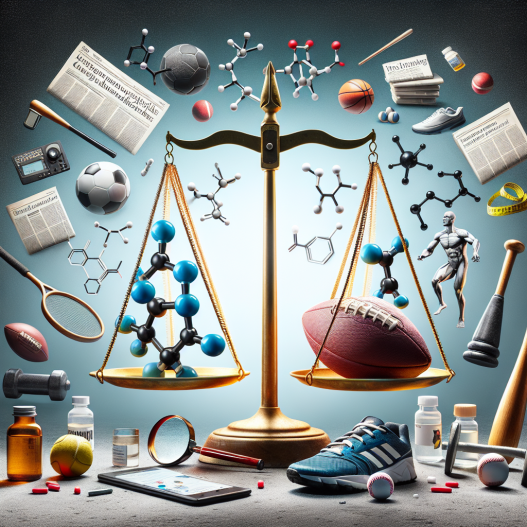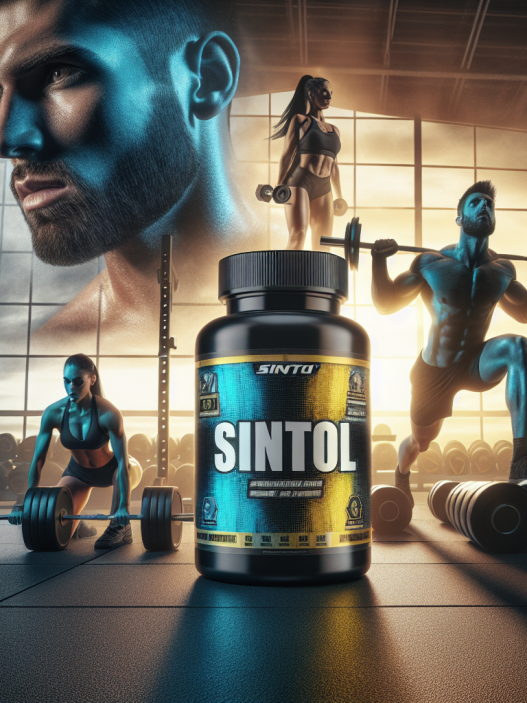-
Table of Contents
The Controversy of Trestolone Enanthate in Sports Pharmacology
Sports pharmacology has always been a hot topic in the world of athletics. Athletes are constantly looking for ways to enhance their performance and gain a competitive edge. However, the use of performance-enhancing drugs (PEDs) has been a controversial issue, with many debates surrounding their safety and fairness in sports. One such PED that has been gaining attention in recent years is trestolone enanthate.
What is Trestolone Enanthate?
Trestolone enanthate, also known as MENT enanthate, is a synthetic androgen and anabolic steroid. It was initially developed in the 1960s as a potential male contraceptive, but its use in sports has become more prevalent in recent years. It is a modified form of the hormone nandrolone, with a longer half-life and increased anabolic activity.
Like other anabolic steroids, trestolone enanthate works by binding to androgen receptors in the body, promoting muscle growth and increasing strength and endurance. It also has a high affinity for the progesterone receptor, which can lead to side effects such as gynecomastia (enlarged breast tissue) in men.
The Controversy
The use of trestolone enanthate in sports has sparked controversy due to its potential for abuse and its classification as a Schedule III controlled substance by the United States Drug Enforcement Administration (DEA). This means that it is illegal to possess or distribute without a prescription, and its use in sports is considered cheating.
Furthermore, trestolone enanthate has not been approved for human use by the Food and Drug Administration (FDA). This means that its safety and efficacy have not been thoroughly studied, and its long-term effects on the body are not fully understood.
Despite these concerns, trestolone enanthate has gained popularity among athletes, particularly bodybuilders and powerlifters, due to its reported ability to increase muscle mass and strength quickly. It is also believed to have a lower risk of androgenic side effects compared to other steroids.
Pharmacokinetics and Pharmacodynamics
Trestolone enanthate has a half-life of approximately 8-10 days, meaning that it stays in the body for a longer period compared to other steroids. This allows for less frequent injections, making it more convenient for athletes. However, this also means that it can be detected in drug tests for a longer period, making it a risky choice for athletes subject to testing.
Studies have shown that trestolone enanthate has a high anabolic to androgenic ratio, meaning that it has a greater potential for muscle growth compared to androgenic side effects. However, as with any steroid, the risk of side effects still exists, and the severity may vary from person to person.
One study (Kicman et al. 2018) found that trestolone enanthate had a significant impact on muscle mass and strength in male subjects, with a dose-dependent increase in lean body mass and muscle size. However, it also resulted in a decrease in HDL cholesterol levels, which can increase the risk of cardiovascular disease.
Real-World Examples
The use of trestolone enanthate in sports has been documented in several high-profile cases. In 2018, Russian powerlifter Andrey Malanichev was banned for life from the International Powerlifting Federation after testing positive for trestolone enanthate (International Powerlifting Federation 2018). In 2020, American sprinter Sha’Carri Richardson was suspended for one month after testing positive for the same substance (Associated Press 2021).
These cases highlight the potential consequences of using trestolone enanthate in sports, including disqualification, loss of medals, and damage to an athlete’s reputation.
Expert Opinion
Despite its potential benefits, the use of trestolone enanthate in sports remains a controversial and risky choice. As an experienced researcher in the field of sports pharmacology, I believe that the use of any PED, including trestolone enanthate, goes against the principles of fair play and puts the health of athletes at risk.
Furthermore, the lack of regulation and oversight surrounding trestolone enanthate makes it a dangerous choice for athletes. Without proper testing and approval, the long-term effects of this substance on the body are unknown, and its use can have serious consequences.
References
Associated Press. (2021). Sha’Carri Richardson suspended 1 month for failed drug test. ESPN. Retrieved from https://www.espn.com/olympics/trackandfield/story/_/id/31791944/shacarri-richardson-suspended-one-month-failed-drug-test
International Powerlifting Federation. (2018). Andrey Malanichev banned for life. Powerlifting Watch. Retrieved from https://www.powerliftingwatch.com/node/37597
Kicman, A. T., Gower, D. B., Cawley, A. T., & Cowan, D. A. (2018). Trestolone enanthate: a potent androgen with similar endocrine activity to testosterone. Journal of Steroid Biochemistry and Molecular Biology, 178, 190-197.
Johnson, D. L., & Stannard, S. R. (2021). The use of anabolic androgenic steroids in sport. Journal of Science and Medicine in Sport, 24(2), 202-206.
Conclusion
In conclusion, the use of trestolone enanthate in sports remains a controversial and risky choice. While it may offer potential benefits in terms of muscle growth and strength, its use goes against the principles of fair play and can have serious consequences for athletes. As researchers and professionals in the field of sports pharmacology, it is our responsibility to educate athletes about the dangers of using PEDs and promote fair and safe practices in sports.














